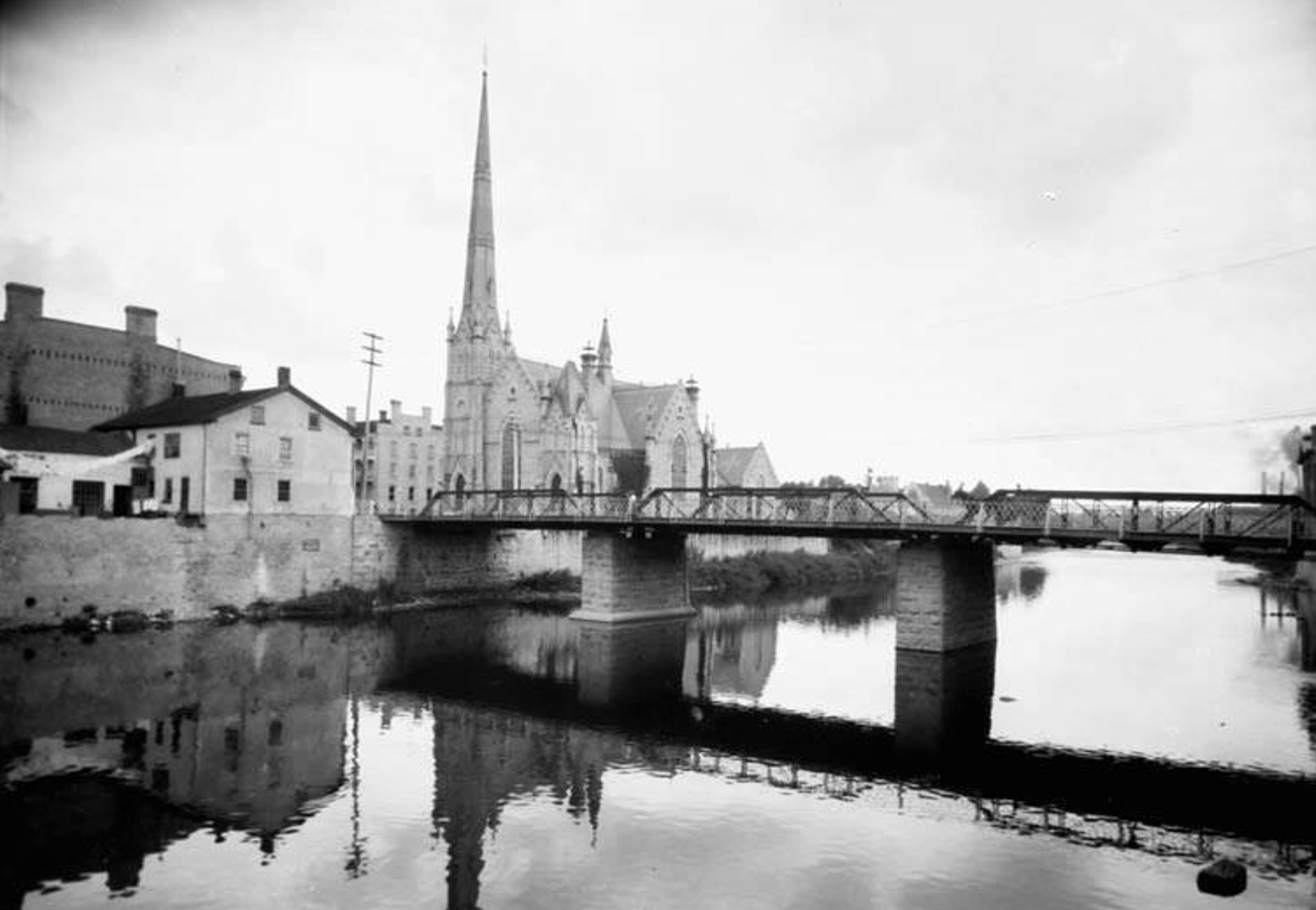You've driven over it, walked across it and no doubt stopped beneath its arches to admire the north and south views of the Grand River.
But are you aware that the Main Street bridge in downtown Galt is one of four nearly identical bridges built on the Grand around the same time?
Spanning the river between Water and Melville Streets, the Main Street bridge is what's called a multiple-span concrete bowstring arch bridge.
It earned a heritage designation from the province and the city in 1982 for its heritage value. It has also been listed on the Ontario Heritage Bridge list; a compendium of provincially significant bridges maintained by the Ministry of Culture.
The photo below shows the bridge under construction in 1931.
Use the slider by grabbing it with your finger on mobile or tablet, or clicking on it with your mouse, and moving it back and forth to compare the two images.
Story continues below...
Canada's Historic Places says the four bowstring bridges were built with the goal of upgrading the province's road network to accommodate a surge in automobile use after the First World War.
The two other bowstring bridges in Waterloo region are the Freeport Bridge and the Bridgeport Bridge in Kitchener. The fourth, built the same year, is the Caledonia Bridge.
Galt's Main Street bridge replaced an earlier bridge first constructed in 1819.

Photo courtesy Wayne Conrad Serbu who posts old photographs on his Facebook group It's Retro Galt, Preston, Hespeler & Kitchener Entertainment Plus
According to the City of Cambridge historical downtown walking tour, one story related to the bridge took place in 1837 during the battle at Montgomery's farm. It was there where William Lyon Mackenzie led an unsuccessful resistance against the Imperial Government.
"Local rumours quickly spread that Mackenzie was hiding out in Dumfries Township. A guard was stationed at the Main Street Bridge for several weeks in the hope of catching Mackenzie or his men, however, no arrests were ever made."
The tour also details how in 1858, a portion of the bridge was carried away by floodwaters, trapping a number of men on the broken span.
"Although the bystanders were sure that the victims would drown, the men managed to scramble into a tree farther down the river."
It was one of several floods that destroyed or damaged the previous span.
Historic Places says the bowstring bridge was commissioned by the former City of Galt, at a cost of approximately $55,000, although another account lists the price as $52,000.
The structure was designed by Archibald B. Crealock, a consulting engineer from Toronto who worked extensively for the province.
It was built in four months, by W.H. Yates Construction Company Limited of Hamilton. Its official opening took place on December 22, 1931.
Crealock also designed the Park Hill Road bridge.
Historic Places says "the bowstring design was popular in the 1920s and 1930s as it required minimal material, was simple to install and could easily accommodate vehicular traffic."
"It has an overall length of 188 feet and two spans of 94 feet each. The bridge's abutments and piers are built entirely on limestone bedrock. Two lanes of cars can cross the bridge and 8 foot wide sidewalks, one on either side of the vehicular traffic, make it a pedestrian-safe structure."
In 2008 and 2009, major work replaced the entire bridge deck and railings, and refurbished the concrete arches at a cost of $1.9 million.
A historical plaque located in the parkette on the west side of the bridge details its story and is part of the Heritage Bridges Program sponsored by the region's heritage planning advisory committee.
Looking beyond the bridge, in the 1931 photo on the left, is a three-storey residential and commercial structure built in 1856 by Gavin Hume.
It is visible behind a building that no longer exists and it remains one of Galt's oldest surviving commercial buildings. Hume was a prominent Galt hardware and grocery merchant.
On the right, Central Presbyterian Church can be seen towering over Queen's Square. Built in 1882, the church is nearing the end of a three-year, $2.5 million restoration project this month.
Fog, construction equipment and the treeline obscures homes on Dickson Hill that are clearly visible today.
Landmarks is an occasional feature of CambridgeToday, using Juxtapose to display old and new photos to help tell the story of Cambridge; a city that will celebrate its 50th anniversary in 2023. Old photo submissions are welcome at [email protected].
.jpg;w=960)